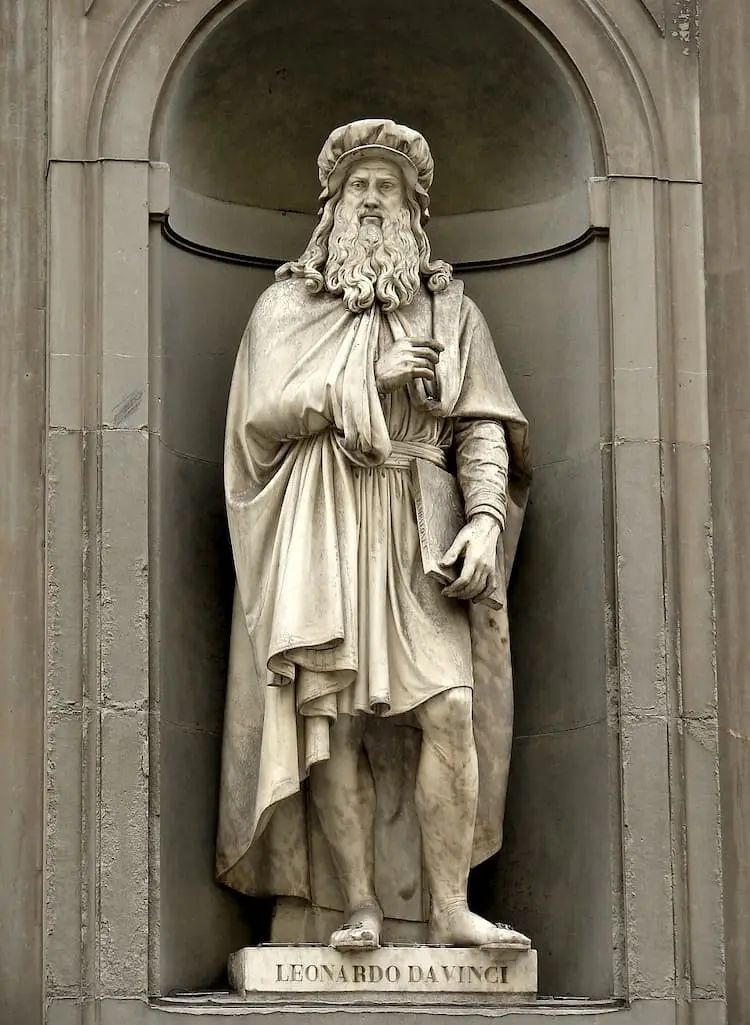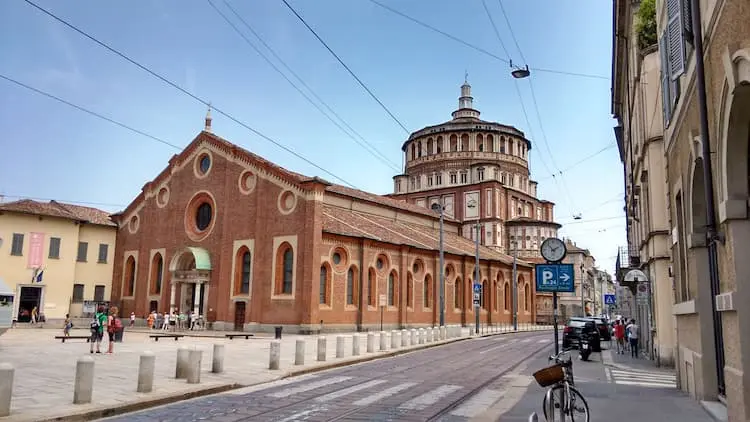Few works of art have captured the world’s imagination like Leonardo da Vinci’s Last Supper. Nestled in the heart of Milan, this iconic masterpiece transcends time, offering a glimpse into the genius of one of history’s most celebrated artists. But what makes the Last Supper painting so extraordinary? How did it come to be, and why does it continue to fascinate us centuries later? In this blog post, we delve into the rich history and artistic brilliance of the Last Supper painting, exploring its creation, significance, and enduring legacy. Whether you’re an art enthusiast, a history buff, or planning your next visit to Milan, join us as we uncover the secrets behind Leonardo’s legendary work and learn how you can experience this masterpiece up close.
Last Supper’s Historical Background
“Il Cenacolo” or “L’Ultima Cena” as the Last Supper is called in Italian has a history dating back to more than five centuries ago. In 1495, Ludovico Sforza, the Duke of Milan, commissioned Leonardo da Vinci to create a mural that would grace the refectory of the Convent of Santa Maria delle Grazie
. Sforza envisioned a grand depiction of the Last Supper of Jesus and his disciples, intended to reflect the religious and cultural prominence of the Sforza family and the city of Milan. Leonardo, known for his meticulous approach and innovative techniques, began the monumental task, immersing himself in the project with a vision that would eventually redefine Renaissance art.

At the time of creating the Last Supper, Leonardo da Vinci was already renowned for his works and intellectual prowess. The project spanned approximately three years, from 1495 to 1498, during which Leonardo experimented with new techniques and painstakingly crafted each detail. The Last Supper adorns the wall in the dining hall at the monastery of Santa Maria delle Grazie. This convent, a masterpiece of Gothic and Renaissance architecture, was an important religious center in Milan. Santa Maria delle Grazie, later declared a UNESCO World Heritage site, provides a fitting backdrop for Leonardo’s work, enhancing its spiritual and historical resonance.
Artistic Significance of the Last Supper
Last Supper is not just a testament to Leonardo da Vinci’s artistic skill but also to his innovative spirit. Unlike traditional fresco techniques, which involved applying water-based paints onto wet plaster, Leonardo experimented with a new method. He painted on dry plaster, mixing tempera and oil paints to achieve greater detail and luminosity. This allowed da Vinci more time to work on the intricate details and subtle expressions of his subjects.
The scene depicted in Last Supper is not a frozen moment but rather a representation of successive moments . Leonardo captures the moment immediately after Jesus announces that one of his disciples will betray him, a pivotal scene filled with emotion and tension. The disciples are grouped in threes, each reacting differently to the news, creating a dynamic yet harmonious composition. Jesus is the calm center, forming a triangle with his outstretched arms, which draws the viewer’s eye directly to him.
Symbolism is woven throughout the painting. The spilled salt near Judas, for example, symbolizes betrayal, while the bread and wine on the table represent the Eucharist. Each disciple’s gesture and expression reveal their personality and relationship to Jesus, adding layers of meaning to the scene.
Restoration and Preservation
From the moment it was completed, Leonardo da Vinci’s Last Supper faced numerous challenges that threatened its longevity. The experimental technique Leonardo used—applying tempera and oil paint onto a dry wall—proved to be less durable than traditional fresco methods. Additionally, the refectory suffered significant damage during the Second World War bombings, leaving the painting exposed to the elements for several years. Over the centuries, the Last Supper has undergone several major restoration efforts aimed at preserving this invaluable masterpiece. Early attempts in the 18th and 19th centuries often did more harm than good, as restorers used unsuitable materials and techniques that failed to address the underlying issues. However, the most significant restoration began in 1978 and lasted until 1999. This painstaking project, led by a team of experts, sought to stabilize the painting and recover as much of Leonardo’s original work as possible. The painting, despite restoration efforts, remains fragile, so, in an effort to slow its deterioration, visitors are allotted 15 minutes to view the mural in small groups of 35 at the time of this writing.
How to visit the Last Supper
 Leonardo’s Last Supper museum is called the Cenacolo Vinciano
and is located in Milan, Italy inside the Convent of Santa Maria delle Grazie. The historic convent is situated at Piazza di Santa Maria delle Grazie, a short distance from the Milan city center. It can easily be reached by Milan public transport
or even private transportation if you are traveling by car.
Leonardo’s Last Supper museum is called the Cenacolo Vinciano
and is located in Milan, Italy inside the Convent of Santa Maria delle Grazie. The historic convent is situated at Piazza di Santa Maria delle Grazie, a short distance from the Milan city center. It can easily be reached by Milan public transport
or even private transportation if you are traveling by car.
The Last Supper is one of Milan’s most popular attractions, drawing art enthusiasts and tourists from around the globe to witness this Renaissance masterpiece in person. It is advisable to purchase the tickets well in advance, often months before your planned visit, as they sell out quickly. Reservations are typically made online through the official website .
Tickets to see the Last Supper painting cost 15 € for a single entry and the reduced tickets with certain conditions are priced at 2 €. Admission tickets can also be bought with guided tours which are priced 24 € for the full fare ticket. All the prices mentioned are at the time of this writing, ensure to check their website for the latest prices.
A maximum of 5 tickets can be booked online and 9 through the museum’s call center. For groups with 10 or more people, tickets can be booked separately by contacting them through the form given on the website . The Cenacolo Vinciano Museum is open Tuesday through Sunday between 8.15 AM to 7 PM and closed on Mondays, January 1, and December 25. Check the timings on the official website for the latest opening hours.
The main tip when booking tickets is to secure your tickets as soon as your travel dates are confirmed. If tickets are not available for the dates you are looking for keep checking the website, as ticket availability may be refreshed on a daily basis because additional tickets are released or cancellations occur. It is strongly advised to be at the museum 30 minutes in advance before your planned visit with valid identity documents to get the tickets and access the museum. Bulky bags and luggage are not allowed in the museum although there are small-sized lockers present in the ticket office as per availability.
Conclusion
Leonardo da Vinci’s Last Supper in Milan is more than just a painting, it is a timeless masterpiece that continues to captivate and inspire viewers from around the world. Through its innovative techniques, profound symbolism, and enduring influence, the Last Supper stands as a testament to Leonardo’s genius and the rich cultural heritage of Milan.
As you explore the depths of this masterpiece and the vibrant city of Milan, you will gain a deeper appreciation for the intricate blend of art, history, and culture that defines the Last Supper.